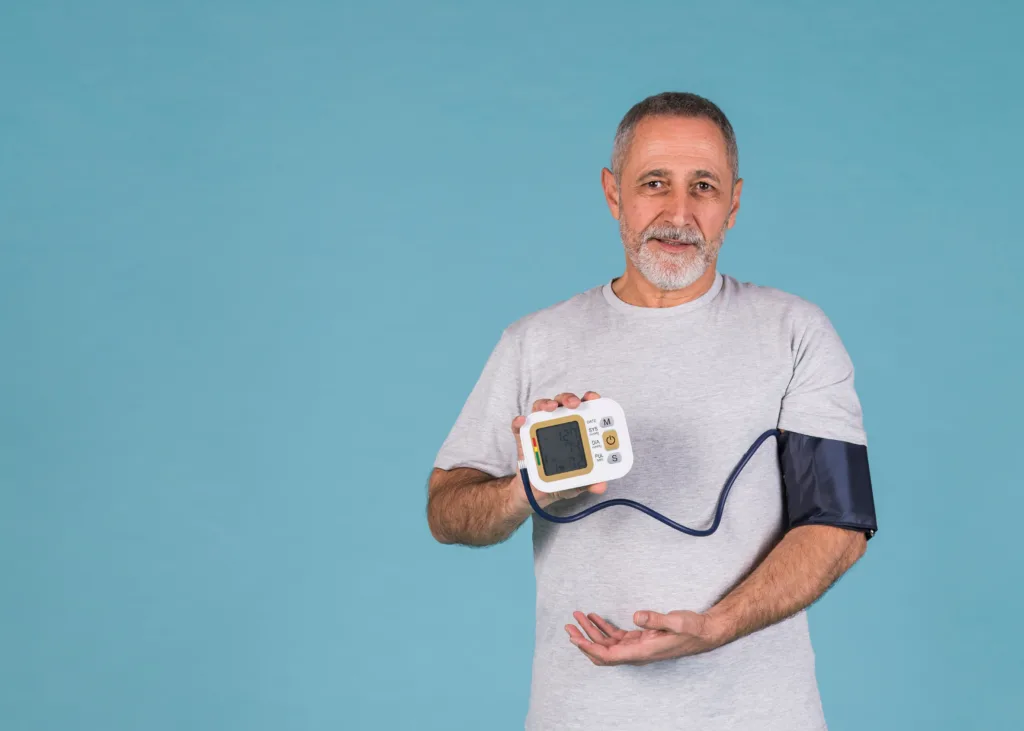Healthcare disparities in the U.S. represent significant differences in the quality and access to medical services across various populations. These disparities are often driven by factors such as socioeconomic status, race, ethnicity, geography, and gender. Consequently, they lead to poorer health outcomes and higher healthcare costs. Therefore, understanding and addressing these disparities is crucial for improving public health and ensuring that all individuals receive high-quality care.
Addressing Healthcare Disparities in 6 Key Populations
Addressing Disparities in Hispanic-Latino Populations
Healthcare disparities persist among Hispanic-Latino populations in the U.S., where language barriers affect access to care. Currently, over 41 million individuals in the U.S. identify as Hispanic or Latino, comprising about 13% of the population. Moreover, 19% of this demographic report speaking English “less than very well.” This contributes to challenges in navigating the healthcare system effectively. Consequently, these language barriers lead to lower rates of preventive care and higher rates of emergency room visits. Thus, there is a critical need for culturally competent healthcare solutions.
Tackling Gender Differences in Healthcare
Gender differences also significantly impact healthcare outcomes, influencing treatment adherence and disease management strategies. In the U.S., women make up 50.8% of the population and have unique health needs that often go unaddressed. For instance, women are more likely than men to experience chronic conditions such as arthritis and depression. Yet, they are less likely to receive timely diagnosis and appropriate treatment. Therefore, addressing these disparities not only improves health outcomes but also enhances organizational efficiency and patient satisfaction.
Overcoming Healthcare Challenges in Rural Communities
Rural communities in the U.S. face significant healthcare challenges, with approximately 60 million Americans residing in rural areas. These regions often lack access to primary care providers, resulting in higher rates of preventable diseases and chronic conditions. Telemedicine presents a viable solution, bridging the gap by offering remote consultations and monitoring services. As of 2023, 22% of rural Americans reported using telehealth services. This demonstrates its growing acceptance and effectiveness in improving healthcare access and outcomes.

Addressing Socioeconomic Barriers to Healthcare
Socioeconomic status significantly influences healthcare access and outcomes. Low-income individuals face more significant barriers. In the U.S., approximately 34 million people live below the poverty line, which limits their ability to afford healthcare services. Therefore, these individuals are less likely to have health insurance, leading to delayed medical care and worse health outcomes. According to recent data, uninsured adults are three times more likely to forgo necessary medical treatment due to cost concerns. Consequently, addressing these socioeconomic disparities is essential for improving public health and reducing long-term healthcare costs.
Enhancing Healthcare Through Education
Education level is another critical factor affecting healthcare disparities. Individuals with lower educational attainment often experience worse health outcomes. In the U.S., about 14% of adults aged 25 and older have not completed high school. Therefore, these individuals are more likely to engage in unhealthy behaviors and less likely to understand and manage their health conditions effectively. Studies show that higher education levels correlate with better health literacy. This leads to more informed health decisions and improved adherence to treatment plans. Enhancing health education programs can significantly reduce these disparities and promote healthier communities.
Expanding Insurance Coverage for Better Healthcare
Insurance coverage is a major determinant of healthcare access and quality. Uninsured individuals face significant challenges. In the U.S., approximately 8.6% of the population, or around 28 million people, are uninsured. Consequently, lack of insurance leads to delayed diagnoses, reduced access to preventive services, and higher mortality rates. Data indicates that uninsured adults are more likely to skip medical tests, treatments, and follow-up care due to cost. Therefore, expanding insurance coverage is vital for reducing health disparities and ensuring that all individuals receive timely and appropriate medical care.

How Esvyda’s RPM Solution Addresses Healthcare Disparities
Esvyda’s Remote Patient Monitoring (RPM) solution effectively addresses healthcare disparities, benefiting clinics and health entities. By leveraging advanced technology, Esvyda ensures continuous patient monitoring and personalized care. This improves access and quality of care for underserved populations, including Hispanic-Latino communities, women, rural residents, and low-income individuals. Additionally, Esvyda’s multilingual support and culturally relevant resources enhance patient engagement and adherence. Furthermore, telemedicine capabilities reduce the need for travel and provide cost-effective care. Consequently, investing in Esvyda’s RPM technology leads to better patient outcomes and operational efficiency. Thus, promoting a more equitable healthcare system.
Download this artice
Bridging Health Disparities: Empowering Communities.
Esvyda’s Remote Patient Monitoring (RPM) solution effectively addresses healthcare disparities, benefiting clinics and health entities.
By leveraging advanced technology, Esvyda ensures continuous patient monitoring and personalized care.



36 responses to “Bridging Health Disparities: Empowering Communities”
Your article helped me a lot, is there any more related content? Thanks!
Hi Gabrihel, We are really glad the article was helpful! Yes, We do have more related content, feel free to check it out on our recourses section on this web site. Thanks for reading!
RPM is amazing for closing health gaps. It helps people in underserved communities get the care they need, right from home. It’s really empowering to know you can manage your health no matter where you live.
We totally agree Frank! It’s a game-changer for people. Being able to manage your health from home without the long trips makes everything so much easier.
It’s great to see how Esvyda is empowering latin communities to get the care they deserve.
Thanks for the love Mr. Judson! We’re all about making healthcare accessible for everyone. Together, we can create healthier communities!
It’s inspiring to see efforts to bridge health disparities. Empowering communities with tools and access to care is such an important step forward.
Thank you for your kind words Cory! Empowering communities is at the heart of creating a healthier, more equitable future. We’re excited to see the impact these efforts are making!
Fixing health disparities is so important. Love seeing efforts to help communities and make healthcare easier for everyone.
We totally agree, Felix! Everyone deserves good healthcare, and it’s awesome to see communities getting the support they need. Thanks for sharing your thoughts!
I love seeing communities getting the health care resources they need! 💙
Absolutely Savannah! It’s inspiring to see communities getting the support they deserve. Thanks for sharing your thoughts!
Addressing health disparities is such an important mission. Empowering communities really makes a difference!
Absolutely Shelagh! Empowering communities is key to creating lasting change and improving health equity. Thanks for supporting this vital cause!
Great article! It’s so important to bring healthcare to underserved communities. With the right tools, we can really make a difference.
Absolutely Braeden! Closing healthcare gaps requires both access and education. With the right tools and support, we can empower these communities for better health outcomes. Thanks for your thoughts!
This feels like real progress. Hope it’s not just another short-term project.
We appreciate your hope Deidra, and we share it. Esvyda is a long-term commitment. Sustainable change comes from consistent work, trust-building, and ongoing collaboration with communities.
This is personal for me. My neighborhood still lacks a proper clinic.
Thank you for sharing that, Deeva. Situations like yours are exactly why this work matters. We’re advocating for more investment in underserved areas to close those long-standing gaps.
How do you make sure the community’s voice is actually heard?
Great question, Michael. We engage through town halls, surveys, local advisory boards, and most importantly, by acting on the feedback we receive and building lasting relationships.
Appreciate the focus on equity instead of just “access.”
We’re so glad you noticed, Slade. Access alone isn’t enough. Equity means removing systemic barriers and ensuring everyone has what they need to achieve the same level of health.
Okay, but what about language barriers? That’s a huge issue where I live.
Absolutely, Carmelo. Language access is critical. We prioritize multilingual services, culturally relevant education, and hiring community health workers who reflect the people they serve.
Is this just for rural areas, or does it include cities too?
Coral, It includes both. Health disparities exist in urban and rural settings, often for different reasons. So our strategies must adapt to each community’s unique context.
Why are these gaps still so big in 2025? What’s taking so long?
A fair and important point. Health disparities are complex and rooted in decades of structural inequality. We’re working to accelerate change, but it requires sustained effort, resources, and accountability.
Love the “empowerment” focus. Feels way better than just handing out pamphlets.
Exactly Ingrid. Empowerment means listening, co-creating solutions, and making sure communities have the tools and voice to drive their own health outcomes.
This sounds great, but how do we actually reach the people who need it most?
Excellent question Yasmina. It takes trusted partnerships with local organizations, community leaders, and outreach tailored to each population’s unique needs, not one-size-fits-all.
Finally someone’s talking about this, not just throwing apps at problems. 👏
Thank you Willoughby! Technology has a role, but real change starts with understanding the root causes of disparities and working hand-in-hand with communities to build solutions.